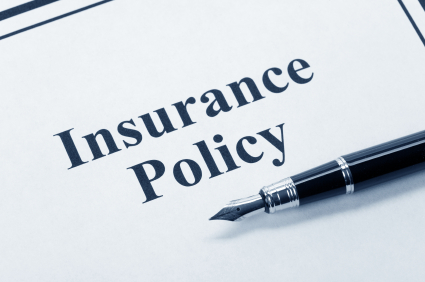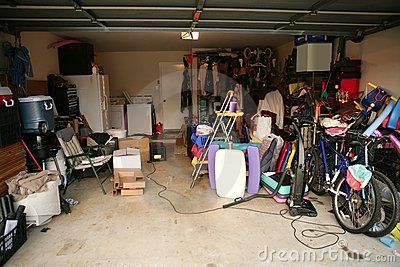
by Flagship Staff | Dec 12, 2017 | Blog
The holiday season is officially here! Now comes the hustle and bustle of the season, as well as fun family traditions. Families are venturing into the wilderness to cut fresh trees. Neighbors are spending time on their roofs trying to win the neighborhood-decorating contest.
Unfortunately, there are thousands of holiday related injuries every year! While there are plenty of funny holiday mishaps in the movies, remember that’s Hollywood. In real life, these mishaps could lead to a visit to your local hospital.
Holiday injuries can include:
-Lacerations;
-Strains and sprains;
-Bruises and abrasions;
-Fractures;
-Internal injuries; and
-Concussions.
Below are a number of resources that can prevent you from becoming a holiday statistic.
Six ladder safety tips to keep you safe during the holidays
Nine tips to stay safe in busy parking lots this holiday season
Tips to make your pet’s holiday travel enjoyable and safe
Five tips to keep your Christmas tree from going up in flames
Seven tips for getting your Christmas tree home safely
Winter holiday safety

by Flagship Staff | Dec 5, 2017 | Blog
Each year in November, I receive my home and auto insurance renewal policy. In my house, my wife looks at how the premium changed and then leaves it on the counter or nightstand for me to review. Because I have been in the industry for over 20 years, I do take a peek.
What do you do when your policy arrives? My guess is if you’re like most people, you take a quick glance and then file it away until it’s needed.
Because life is constantly changing, it’s wise to review your policy more frequently. Here are some times when you should review your policy.
1. Policy Renewal.
When you receive your renewal, ask yourself the following questions. Is there any documentation from the insurance company that indicates a coverage change?
Does it make sense to increase my deductible in an attempt to save money?
Do I need additional policies such as flood, earthquake, or an umbrella policy?
Do I qualify for discounts? At West Bend, we offer discounts for
Safe and accident free drivers;
New and updated homes;
Multi-car families;
Resident students; and
Anti-lock brakes.
2. Do it yourself projects (DIY).
If you’ve lived in your home for a while and decide, it’s time to make some upgrades to your home, don’t forget about how those changes could affect your insurance. Kitchens and bathrooms are often the focus of many DIY home remodeling projects. Expanding the size of them or installing materials that are more expensive could cause your home to be underinsured if it’s a total loss.
In addition, don’t forget about improvements outside your home. In my neighborhood, gazebos, pergolas, and hot tubs are popular. In addition, a new shed may be needed so you have room to store new toys in your garage such as a boat or motorcycle.
Lastly, a new roof is a big investment. Many insurance carriers charge more for homeowners insurance if a roof is older. Replacing the roof could change your coverage from actual cash value to replacement cost. Replacement cost provides the coverage you need to replace your roof, while actual cash value provides coverage for the value of the roof at the time it’s replaced; it takes into account depreciation of the shingles.
All these changes should be reported to your insurance agent.
3. Other improvements made to your home.
If you’ve updated any major home systems i.e. heating, plumbing, or electrical, contact your agent. In addition, if you’ve installed a fire/burglar alarm system that’s monitored by professionals in a call center, discounts may be available.
4. Lifestyle changes.
Is life throwing curve balls your way? Kids leaving or returning home after college or elderly parents moving into your home can affect your insurance policy. In addition, so can a recent marriage, divorce, or sudden death of a spouse.

by Flagship Staff | Nov 28, 2017 | Blog
As Thanksgiving approaches, holiday decorations will begin lighting our neighborhoods. With the dark days of winter here, I enjoy the extra light. It may also be the last time of the year to clean out leaves from your gutters.
No matter what the job may be, ladder safety is important. Every year, thousands of people are injured and hundreds killed while using a ladder. Every time I go on my ladder, I remember falling off my parents’ ladder as a young boy and breaking my collarbone.
If you’re getting ready to hang your outdoor decorations or you’re putting up a tall Christmas tree, here are some safety tips to make sure your holiday season is spent safely with family and friends.
Six Ladder Safety Tips
1. Check your local weather report. While Black Friday may be the day you choose to put up your decorations, it’s important to pay attention to your local weather forecast. Standing on a ladder in high winds could cause you to lose your balance. In addition, light drizzle can cause your ladder to become slippery. Make sure you pick a dry day with calm winds.
2. Properly inspect your ladder. Before using your ladder, make sure it’s in good working order. My ladder isn’t very old, doesn’t get much use, and is stored in my garage so I know it’s in good shape. If you store your ladder in a shed or outside, make sure you double-check it.
3. Select the appropriate ladder size for the job. Different jobs require different-sized ladders. If the only way you can get to your gutter to remove leaves or to hang lights is to step on the top step of the ladder, you need to buy a longer ladder. Standing on the top is very dangerous and can cause the ladder to become very unstable. One wrong move and you could be in a world of hurt. If you plan on going on your roof, make sure the ladder extends three feet above the roof elevation.
4. Don’t stretch. While stretching is good for you before using the ladder, stretching or reaching while on a ladder can lead to injury. Over-stretching on a ladder could cause it to kick out from under you and leave you hanging on the gutter.
5. Be cautious by doors. If you’re working by a door that can open toward the ladder, let your family know you’re working there. The last thing you want is for a family member to open the door to grab the newspaper so they can check the holiday ads. A good idea is to tape a note on the door reminding your family you’re working.
6. Make calculated movements. Before making your next move, think about what you want to do and move slowly. Sudden jerks can cause you to lose balance.
by Flagship Staff | Nov 23, 2017 | Blog
 As Americans prepare their Thanksgiving feasts this holiday week, fire prevention experts across the country are busy preparing for the riskiest day of the year.
As Americans prepare their Thanksgiving feasts this holiday week, fire prevention experts across the country are busy preparing for the riskiest day of the year.
Thanksgiving is the leading day for home cooking fires in America, according to the National Fire Protection Association (NFPA). In 2015, U.S. fire departments responded to an estimated 1,760 home cooking fires on Thanksgiving, roughly 3 times the daily average.
Related: Home fire risk more than doubles on Thanksgiving Day
The NFPA also says unattended cooking was by far the leading contributing factor in cooking fires and cooking deaths. One popular but dangerous cooking method can cause serious injury and major property damage if done incorrectly: turkey frying.
This year, QBE North America has released a list of turkey fryer safety tips in preparation for the holiday season.
“Cooking continues to be one of the top ways that home fires are started,” said Mark McCormick, Vice President, Personal Risk Services for QBE North America. “By sharing our expertise, QBE hopes to help more people have a safe and healthy holiday.”
Here are 16 turkey fryer safety tips to keep in mind this holiday season:
Oil dangers
Follow the manufacturer’s instructions to avoid overfilling. Oil can ignite when it makes contact with the burner. Remember the turkey will cause displacement so what may seem like a small amount of oil without the turkey will probably end up being the correct amount of oil.
•Purchase a fryer with temperature controls, and watch the oil temperature carefully. Cooking oil that’s heated beyond its smoke point can catch fire. If you notice the oil is starting to smoke, turn the fryer off immediately.
•Do not dispose of oil down the sink drain.
Related: Here’s what you need to know about fire safety during the holidays
Setting up your fryer
•Keep outdoor fryers off decks, out of garages, and a safe distance away from trees and other flammable (even non-flammable) structures.
•Make sure the turkey is thawed and completely dry before cooking. Any ice or water that mixes into the hot oil can cause major flare-ups.
•Be mindful of the weather. Never operate a fryer outdoors in the rain or snow.
•Always have the fryer on a level surface. Avoid moving the fryer once it is in use and wait for it to cool before moving it.
•Leave 2 feet between the tank and the burner when using a propane-powered fryer.
Related: 25 U.S. cities with the highest risk of home fires
Using the fryer
•Never leave the fryer unattended while heating, in use, or cooling down.
•Turn off the burner before lowering the turkey into the oil. Once the turkey is submerged, turn the burner on.
•Wear the proper safety equipment: goggles to shield your eyes and oven mitts to protect your hands and arms.
•Keep a grease-rated fire extinguisher close by for emergencies.
•Don’t stuff the turkey before frying, and avoid water-based marinades to reduce the chance of flare-ups.
•If you have a flare-up, don’t use a garden hose to put out the fire. Use your grease-rated fire extinguisher.
Other tips
•Keep children and pets away from the fryer at all times.
•Once the frying has finished, carefully remove the pot from the burner, place it on a level surface, and cover it to let the oil cool overnight before you dispose of it.
Related: Fire prevention: 5 potential fire risks in your home

by Flagship Staff | Nov 21, 2017 | Blog
Now that fall is officially here, it’s time to prepare your home for the cold weather like putting on the storm doors, cleaning your gutters, and tuning up the furnace. And don’t forget your garage! Did you know most garage fires occur in January and February?
According to U.S Fire Administration, each year there are 6,600 garage fires in homes that result in an average of 30 deaths, 400 injuries, and $457 million in property loss.
Electrical malfunction is the leading cause of garage fires. These fires start because of shorts in wires, damaged wires, and overloading electrical outlets. Garage fires can spread farther, go undetected longer, and lead to more injuries and dollar loss than fires that originate in other areas of your home.
Wendy Wagner, senior personal lines underwriter will share some safety tips for your garage or detached outbuilding.
Safety Tips
– Store oil, gasoline, paints, propane, and varnishes in a shed away from your home.
– Keep items that can burn on shelves away from appliances.
– Plug only one charging appliance into an outlet.
– Keep the garage tidy and remove clutter.
– When powering or charging appliances, avoid using an extension cord.
– Avoid using carpets or rugs on the garage floor.
– Do not fill portable gasoline containers inside your garage.
– Install a heat alarm, rather than a smoke alarm, in your garage. The heat alarm will sound if the temperature rises too high. Smoke alarms in garages can sound because of a change in temperature and humidity, as well as dust, fumes and insects. Heat alarms are not affected by these conditions.
– Do not use or install solid-fuel burning devices (wood, pellet, coal) in garages, workshops, or detached outbuildings and anywhere gasoline and other flammables vapors may be present. (Per NFPA code 211, location of Appliances 12.2.4 solid fuel burning appliances shall not be installed in any garage.)
Following these easy steps is a sure way to keep your home and possessions safe throughout the year!




 As Americans prepare their Thanksgiving feasts this holiday week, fire prevention experts across the country are busy preparing for the riskiest day of the year.
As Americans prepare their Thanksgiving feasts this holiday week, fire prevention experts across the country are busy preparing for the riskiest day of the year.